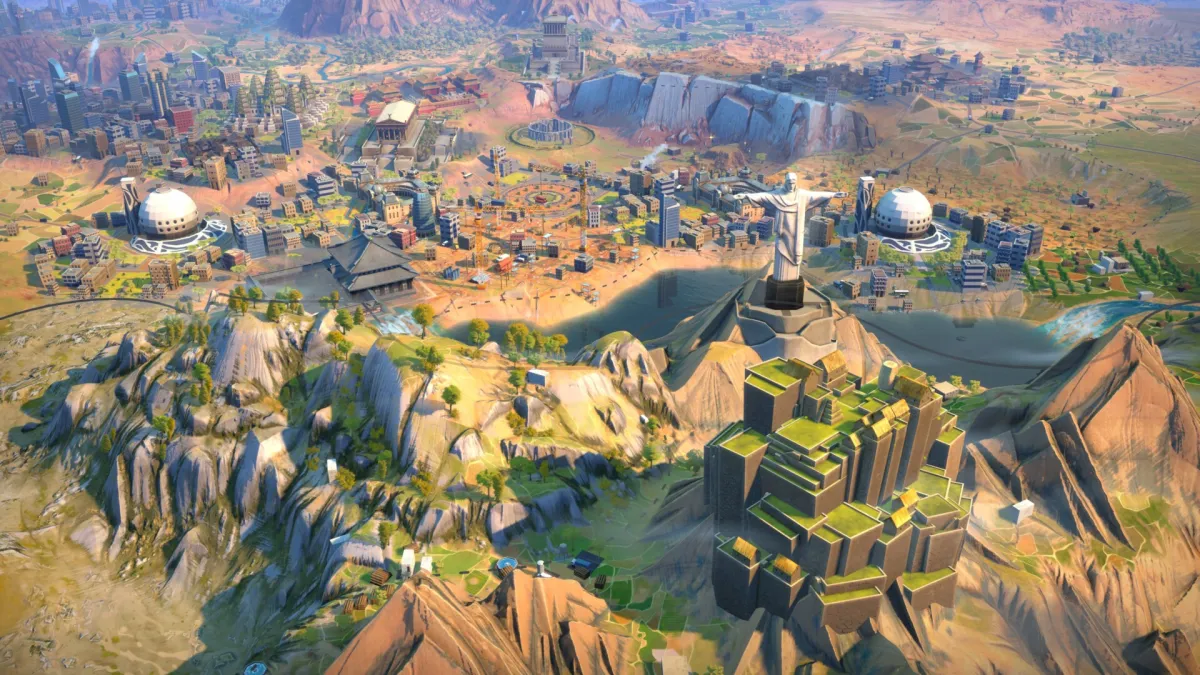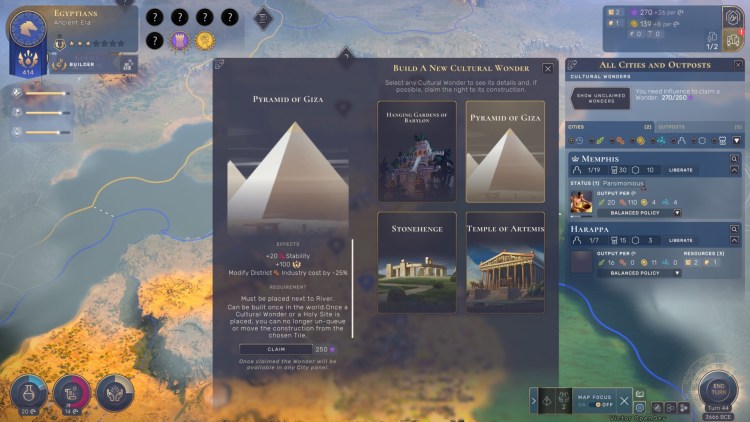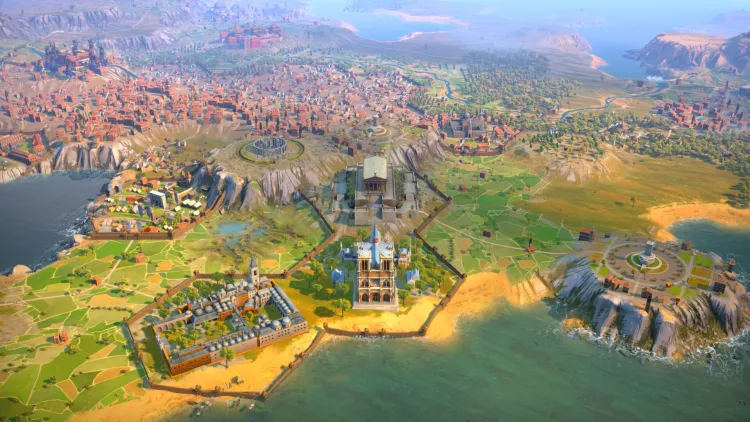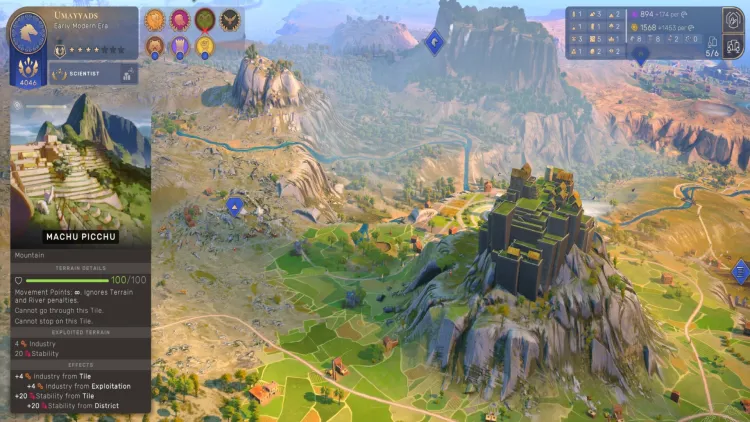Similar to a 4X strategy game like Civilization, Humankind allows you to construct cultural wonders. However, the mechanics are vastly different and influence plays a key role. Still, you might obtain some nifty bonuses, including extra fame and stability. Here’s our Humankind guide to help you out with the best cultural wonders or world wonders for your empire.
Note: For more information, check out our Humankind guides and features hub. You may also take a look at our beginner’s guide to learn about the basic mechanics and early-game progression.
Humankind: Cultural Wonders guide – Claiming the best Wonders in your campaigns
In Humankind, wonders have to be claimed by an empire using influence, preventing others from selecting it. It’s different from Civilization where anyone could build a wonder. This means that the race isn’t who can build the wonder the fastest, but who can amass enough influence the fastest. It’s also worth mentioning that each time period from the Ancient Era onward has several wonders to choose from. Oh, and if you don’t want a particular wonder from an era, you don’t need to pick one at all.
Note 1: The further you progress in the game, the higher the influence cost when claiming wonders. Once you do attempt to construct them, make sure that there’s a valid tile. Moreover, you won’t be able to claim a new wonder if you haven’t built the previous one that you selected.
Note 2: Likewise, wonders are considered “shared projects” in that multiple cities can lend their industry output to help complete the building. Additionally, you can speed up the construction of wonders, instantly completing them if you wish by using up a city’s population.
Wonderful bonuses
Below, you’ll see the table for all the current world wonders in Humankind. Be reminded that every wonder you complete adds +100 fame score, as well as +2 detection/+2 vision range for districts. Likewise, wonders provide extra stability to the city, enough to actually prevent most instances of rebellions and unhappiness.
| Era | Wonder | Effect 1 | Effect 2 |
| Ancient | Stonehenge | +10 food and +5 stability per coreligionist state; +20 faith; +40 stability On capital: +5% food and +5 stability on the capitals of empires following the same religion On Holy Site: +5 faith and +5 stability | Is considered a Holy Site but does not count towards the Holy Site cap. |
| Temple of Artemis – Must be built next to woodland or forest. | +20 faith; +40 stability +10 health regeneration on units On Holy Site: +5 faith and +5 stability Units ignore movement penalties from forests | Is considered a Holy Site but does not count towards the Holy Site cap. | |
| Hanging Gardens of Babylon – Must be built on a luxury resource deposit. | +20 stability | Extracts any luxury resource from the deposit that it’s built on. | |
| Pyramid of Giza – Must be built next to a river. | +20 stability -25% district industry cost | N/A | |
| Classical | Mausoleum at Halicarnassus | +1% science per district on city or outpost; +20 stability | N/A |
| Statue of Zeus | +20 faith; +40 stability +5% money per alliance (empire-wide) +10 stability on city or outpost +5 faith and +5 stability on Holy Site | Is considered a Holy Site but does not count towards the Holy Site cap | |
| Colossus of Rhodes | Militia units aren’t lost over time during sieges; +20 stability | N/A | |
| Lighthouse of Alexandria – Must be built on coastal water or lake | +20 stability; +5 vision range +1 combat strength and +2 naval movement | N/A | |
| Medieval | Notre Dame – Only available if you have the Victor DLC Pack; unlocks related events | +1 faith per researched technology; +20 faith; +20 stability | Is considered a Holy Site but does not count towards the Holy Site cap |
| Todai-Ji | +20 faith; +40 stability; +20% turns before city/outpost is converted by another religion On Holy Site: +5 faith and +5 stability | Is considered a Holy Site but does not count towards the Holy Site cap | |
| Angkor Wat | +1 food per faith; +20 faith; +40 stability On Holy Site: +5 faith and +5 stability | Is considered a Holy Site but does not count towards the Holy Site cap | |
| Forbidden City – Placed on an empty tile or regular district | +25 war support when going to war; +20 stability | N/A | |
| Early Modern | Taj Mahal – Must be built on a river tile. | +20 stability; +50% money on “Calm” city | N/A |
| Topkapi Palace | +20 stability; On city/outpost: +5% industry; +100% production towards any shared project (national project, holy site, or cultural wonder) | N/A | |
| Machu Picchu – Must be built on a mountain. | +20 stability All other cities gain food equal to 50% of the food produced by Machu Picchu’s city | N/A | |
| St. Basil’s Cathedral | +1 faith per district; +20 faith; +40 stability On Holy Site: +5 faith and +5 stability | Is considered a Holy Site but does not count towards the Holy Site cap | |
| Industrial | Big Ben – Must be built on a river tile. | +20 stability + 10% science per alliance (empire) + 10% science on city/outpost +10% science on capital if you’re in an alliance | N/A |
| Eiffel Tower | +20 stability +1 industry per population in all cities | N/A | |
| Statue of Liberty – Must be built on coastal water. | +20 stability +1% money and +1% science per number of territories in your sphere of influence | N/A | |
| Contemporary | Christ the Redeemer/Cristo Redentor – Must be built on a mountain. | +20 faith; +40 stability On all cities: +10% food/money/industry/science On Holy Site: +5 faith and +5 stability | Is considered a Holy Site but does not count towards the Holy Site cap |
| Empire State Building | +20 stability; +20% money from all on-going trades | N/A | |
| Sydney Opera House | +20 stability; +20 stability on city/outpost On “Calm” city: +10% food/money/industry/science | N/A |
If there’s time, I personally like building Stonehenge during the Ancient Era. It’s all because of the extra faith generation you can get (which is actually important since followers of your state religion can synergize with science boosts later). There are, however, a couple of notable picks down the line.
First, there’s Angkor Wat which you can get during the Medieval Era. Assuming you’ve generated a lot of faith already, then you’ll have a ton of extra food to go around. Second, there’s Machu Picchu from the Early Modern Era. The city that owns the territory you build this on will provide 50% of its food to all your remaining cities. It’s possible to instantly have a massive food surplus.
Later if you were able to expand further to control more cities/outposts/territories, I suggest claiming the Eiffel Tower, Statue of Liberty, and Christ the Redeemer. Going “wide” in a sense, and having these Cultural Wonders in Humankind, help ensure that you’ll have loads of boosts to grow your empire.
Humankind is available via Steam, the Epic Games Store, Stadia, and Xbox Game Pass for PC. For more information, check out our guides and features hub.









Published: Aug 17, 2021 08:15 am